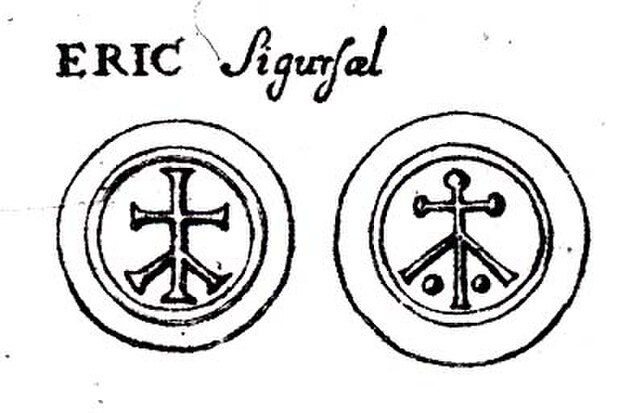The Stone of Eric, listed as DR 1 in the Rundata catalog, is a memorial runestone that was found in Northern Germany. This area was part of Denmark during the Viking Age.
Stone of Eric
Eric the Victorious was a Swedish monarch as of around 970. Although there were earlier Swedish kings, he is the first Swedish king in a consecutive regnal succession, who is attested in sources independent of each other, and consequently Sweden's list of rulers usually begins with him. His son Olof Skötkonung, however, is considered the first ruler documented to definitely have been accepted both by the original Swedes around Lake Mälaren and by the Geats around Lake Vättern. Adam of Bremen reports a king named Emund Eriksson before Eric, but it is not known whether he was Eric's father. The Norse sagas' accounts of a Björn Eriksson are considered unreliable.
Eric praying to Odin before the Battle of Fýrisvellir, as envisioned by Twentieth century artist Jenny Nyström
Another example of King Eric in fantasy art, this published by Gustaf Henrik Mellin in 1850
In 1691 coin expert Elias Brenner published designs allegedly used by King Eric, but a minting of coins by Eric is unknown to modern scientists, and these attributions are considered inaccurate.
Swedish historians have suggested that the smaller tumuli at Old Uppsala probably include King Eric's grave.





